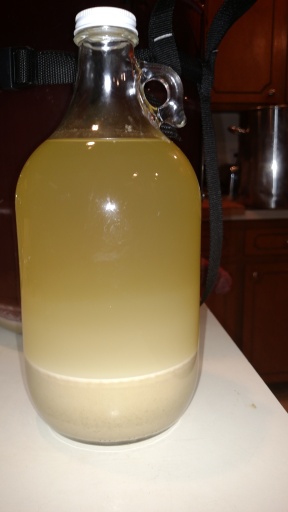I was pushing it to get this beer ready for Thanksgiving at the beach. As a reminder, I used dried hibiscus flowers to make a tea concentrate to mimic the color and flavor of cranberry, and vodka soaked grapefruit zest to complete the attempt to tie the beer to a Sea Breeze cocktail. Since we spend Thanksgiving at the beach, the Sea Breeze name ties it to our Thanksgiving location and the cranberry flavor and color evokes the holiday. Today is the Sunday before Thanksgiving, I’m at the beach, and I’m testing a bottle that I refrigerated for 24 hours.
The result? I’m declaring a success! The color is nice…maybe slightly pale. It’s not clear, but that’s expected in a wheat beer. It just makes it look look more like a cranberry jelly. The aroma is hard to describe…but it’s a nice fruity, almost candy scent. The flavor is subtly salty with a tang in the finish. I think there’s a little bitterness/sharpness from the grapefruit zest. I’m not sure if the coriander is really contributing much…but maybe it’s just blending well and doing that “Je ne se crois” thing. The carb is very good, with a white, thin layer retained throughout the drink. I was concerned that I bottled too soon and that it might overcarb, but it’s good. When I get home, I think I’ll refrigerate what’s left, so that it stops or slows any possible additional carbing.
As usual, I’ll be responsible for cooking and carving the Turkey. I’ll also make a broccoli casserole. I have a batch of my traditional Scottish shortbread https://mmmfoodies.wordpress.com/2015/11/14/traditional-scottish-shortbread/
and, for the first time, I will Make my Dad’s Yeast Rolls
https://mmmfoodies.wordpress.com/2015/07/12/my-dads-rolls/
…something I tried last year and failed. This year, I have the right recipe and I have tested it successfully, twice. And with the beer to toast, it should be a great meal! I feel like this style of beer will compliment the big meal and cut through some of the richness. It may also contribute to the after-meal nap!
Happy Thanksgiving to all!








































